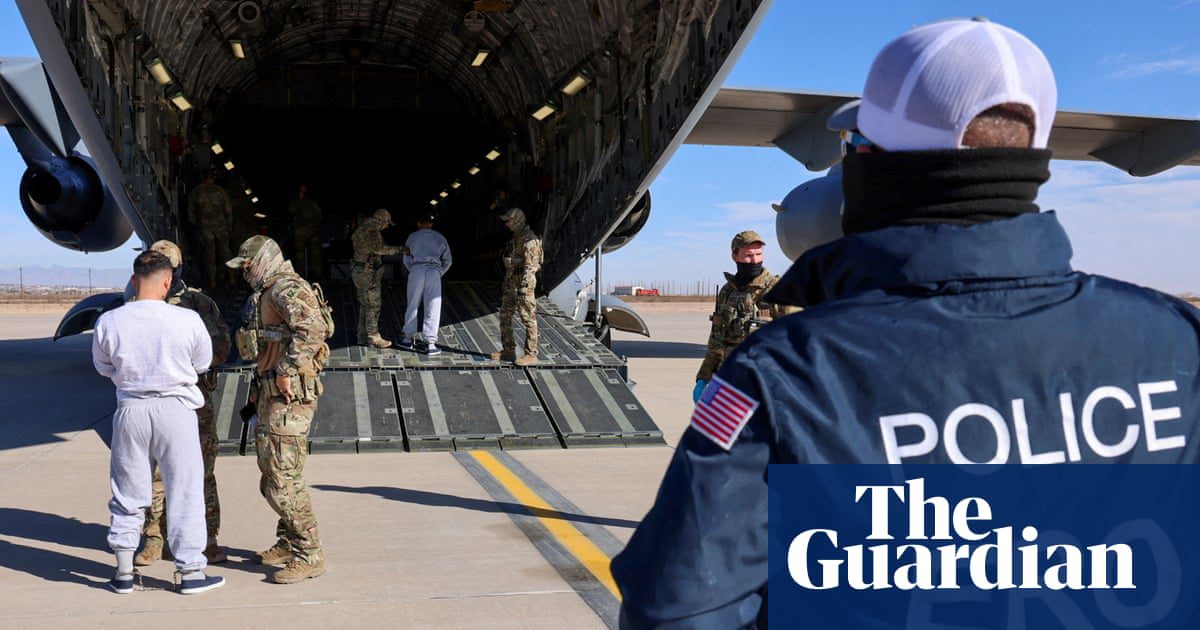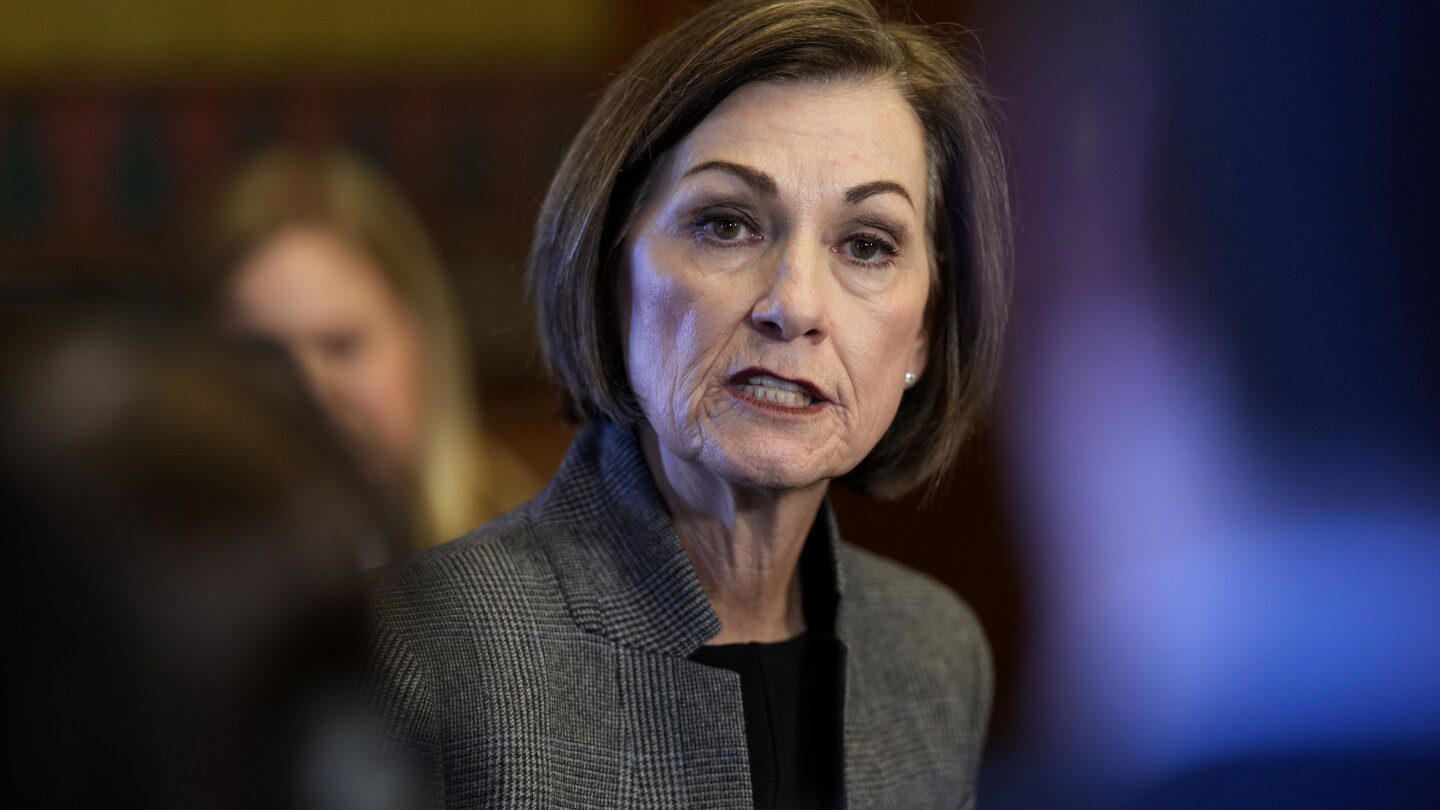
In striking government images, men in handcuffs and shackles are shown being escorted toward military cargo planes, destined for an uncertain future in a notorious location.
Kristi Noem, the Homeland Security head under Donald Trump, emphatically declared that these individuals represent “the worst of the worst,” alleging they include “criminal alien murderers, rapists, child predators, and gangsters” being sent to Guantánamo Bay.
In various interviews and social media statements, Noem claimed that those transported to the infamous U.S. naval base in Cuba include South American “child predators,” drug smugglers, and “ruthless gang members” responsible for “appalling crimes.”
However, ten days into the Trump administration’s initiative to transport immigrants to Guantánamo, officials have yet to substantiate these claims, leaving many questioning the detainees’ identities and whether any have truly committed crimes.
Jessica Vosburgh, a senior attorney with the Center for Constitutional Rights, stated, “The portrayal being presented by the government of these individuals as dangerous and violent is blatantly false.” She added that the people being sent to Guantánamo are likely not, for the most part, threats, although some may have varied criminal histories.
With nearly two decades of legal experience aiding inmates at what critics refer to as “America’s gulag,” attorney J. Wells Dixon remarked, “It’s nearly impossible to ascertain what’s happening in Guantánamo right now. I doubt the Trump administration fully comprehends the situation.”
The publicly released photos featuring individuals labeled as “extremely dangerous criminal aliens” have unintentionally shed some light on the identities of those incarcerated at Guantánamo.
According to Migrant Insider, family members have identified one detainee from the initial group of ten transported to Guantánamo on February 4 as Luis Alberto Castillo Rivera, a 23-year-old Venezuelan who was apprehended while seeking asylum at the southern border on January 19, just a day before Trump pledged to expel “millions and millions of criminal aliens.” Castillo’s sister, Yajaira, insisted, “He’s innocent,” rejecting claims that her brother was affiliated with Venezuela’s Tren de Aragua gang.
A second identified individual is 37-year-old Tilso Ramón Gómez Lugo, a car mechanic detained after crossing the border in April 2024, who was held in a Texas immigration facility. “I’ve known him since childhood. He’s well-educated, has a good family, and is a respected member of our community,” a friend spoke to the Guardian, choosing to remain anonymous.
“I supported Trump but disagree with these extreme measures, especially against our people,” the friend added, expressing confusion over the harsh treatment of compatriots, believing Trump would take a strong stance against the authoritarian Maduro regime.
The third detainee, 25-year-old Yoiker David Sequera, a Venezuelan barber, was reportedly apprehended by border agents last September after undertaking the treacherous journey through the Darién jungles to reach the U.S. “My son is not a criminal,” a family member lamented, expressing concern that his tattoos may have made him a target.
Overall, the stories of these immigrants remain largely shrouded in mystery.
“The U.S. government has disclosed almost nothing … and they’re being completely evasive about sharing the names,” Vosburgh stated, indicating that her discussions with detainees and their family members reinforced her belief that Noem’s characterizations of them as “vicious” criminals were baseless.
A senior official at the Department of Homeland Security claimed that all those detained at Guantánamo had “committed a crime by entering the United States illegally.” The official added, “In addition to housing violent gang members and other high-threat illegal aliens, Guantánamo Bay is also holding other illegal aliens with final deportation orders. Every single detainee there has a final deportation order,” but no evidence was presented to back claims of connections to gangs or crime.
While the official refrained from revealing exactly how many individuals are currently at Guantánamo, they noted the number is “less than 100”. According to reports, a total of eight flights occurred within eight days, with the New York Times indicating that 98 men had been transported to the military base by Immigration and Customs Enforcement (ICE) between February 4 and February 11.
“We still don’t have clarity on who these individuals are. In that regard, it echoes the past of Guantánamo,” Dixon reflected, recalling how the facility transformed post-9/11 into a holding center for “enemy combatants” in the “war on terror.”
“Many may forget that after Guantánamo opened in early 2002, it took quite a while for the public to learn who was detained there, why they were there, and what happened to them. This knowledge only emerged when lawyers, like myself, began visiting the facility to meet those individuals.”
At that time, U.S. authorities also labeled those inadequate at Guantánamo as “the worst of the worst,” Dixon remembered.
after newsletter promotion
“The reality proved to be vastly different. Many, such as the Uyghurs who escaped persecution in China, found themselves rounded up in the wake of the U.S. invasion of Afghanistan and ended up in Guantánamo … It’s all likely to repeat itself now,” he stated.
Lee Gelernt, an attorney with the American Civil Liberties Union, indicated that all suspected detainees are believed to be Venezuelan men. “However, until we are able to investigate firsthand, we can’t be certain. Given the government’s threats to deport thousands, it may extend beyond just Venezuelans,” he warned.
As the identities of Guantánamo detainees remain obscured, advocates stress that the conditions awaiting them at this isolated base, notorious for past human rights violations and torture, are glaringly apparent.
Reportedly, 53 out of the 98 detainees were sent to a medium-to-high-security facility known as Camp 6, which has previously housed prisoners from the “war on terror” for extended periods. The remaining 45 detainees are held in a lower-security building managed by U.S. Coast Guard personnel on another section of the base, as reported by the New York Times.
A 2007 report from Amnesty International depicted a bleak existence within Camp 6, designed for 178 detainees. The U.S. government claimed it would provide a balance between humane treatment and security, yet activists criticized conditions there as “unacceptably harsh.”
The report highlighted that cells offered no natural light or airflow and were illuminated constantly by fluorescent lighting. Detainees frequently complained of feeling chilly in the steel cells due to temperature controls overseen by guards.
Five Uyghur inmates mentioned in the report revealed that Camp 6’s stringent environment led to feelings of despair, isolation, and abandonment. One previously cheerful detainee reportedly began to exhibit signs of severe distress.
Dixon indicated the possibility of detainees being subjected to isolation for up to 22 hours daily.
Yael Schacher, the Americas and Europe director at Refugees International, noted that Guantánamo detainees have slipped into “a legal black hole.”
“They cannot communicate with relatives or attorneys, creating an extremely isolated environment … It essentially amounts to warehousing individuals without any recourse or means to contact the outside world,” she emphasized, urging for an end to the Trump administration’s transfer policy.
Schacher contended that Guantánamo transfers were politically motivated. “This is theater that emphasizes cruelty toward immigrants,” she criticized.
“Ultimately, what we know is that the Trump administration seems to be invoking the troubling imagery of Guantánamo in an effort to present a tough stance on illegal immigration. This is primarily political, rather than a legal or policy-based issue … It is a human rights catastrophe,” Dixon concluded.
Additional reporting by Clavel Rangel









